
Apple M2 Max (30-GPU) Benchmark, Test and specs
Last updated:
The Apple M2 Max (30-GPU) has 12 cores with 12 threads and is based on the 2. gen of the Apple M series series. The processor was released in Q1/2023. The Apple M2 Max (30-GPU) scores 1,874 points in the Geekbench 5 single-core benchmark. In the Geekbench 5 multi-core benchmark, the result is 15,506 points.

| Name: | Apple M2 Max (30-GPU) |
|---|---|
| Family: | Apple M series (23) |
| CPU group: | Apple M2 (8) |
| Architecture: | M2 |
| Segment: | Mobile |
| Generation: | 2 |
| Predecessor: | Apple M1 Max (24-GPU) |
| Successor: | Apple M3 Max (14-CPU 30-GPU) |
CPU Cores and Base Frequency
The Apple M2 Max (30-GPU) has 12 CPU cores and can calculate 12 threads in parallel. The clock frequency of the Apple M2 Max (30-GPU) is 0.66 GHz (3.50 GHz). The number of CPU cores greatly affects the speed of the processor and is an important performance indicator.
| CPU Cores / Threads: | 12 / 12 |
|---|---|
| Core architecture: | hybrid (big.LITTLE) |
| A-Core: | 8x Avalanche |
| B-Core: | 4x Blizzard |
| Hyperthreading / SMT: | No |
|---|---|
| Overclocking: | No |
| A-Core Frequency: | 0.66 GHz (3.50 GHz) |
| B-Core Frequency: | 0.60 GHz (2.42 GHz) |
Artificial Intelligence and Machine Learning
Processors with the support of artificial intelligence (AI) and machine learning (ML) can process many calculations, especially audio, image and video processing, much faster than classic processors. Algorithms for ML improve their performance the more data they have collected via software. ML tasks can be processed up to 10,000 times faster than with a classic processor.
| AI hardware: | Apple Neural Engine |
|---|---|
| AI specifications: | 16 Neural cores @ 15.8 TOPS |
Internal Graphics
The Apple M2 Max (30-GPU) has integrated graphics, called iGPU for short. Specifically, the Apple M2 Max (30-GPU) uses the Apple M2 Max (30 Core), which has 3840 texture shaders and 480 execution units. The iGPU uses the system's main memory as graphics memory and sits on the processor's die.
| GPU name: | Apple M2 Max (30 Core) |
|---|---|
| GPU frequency: | 0.45 GHz |
| GPU (Turbo): | 1.40 GHz |
| Compute units: | 480 |
| Shader: | 3840 |
| Hardware Raytracing: | No |
| Release date: | Q1/2023 |
| Max. displays: | 5 |
|---|---|
| Generation: | 2 |
| Direct X: | -- |
| Technology: | 5 nm |
| Max. GPU Memory: | 96 GB |
| Frame Generation: | No |
Hardware codec support
A photo or video codec that is accelerated in hardware can greatly accelerate the working speed of a processor and extend the battery life of notebooks or smartphones when playing videos.
| h265 / HEVC (8 bit): | Decode / Encode |
|---|---|
| h265 / HEVC (10 bit): | Decode / Encode |
| h264: | Decode / Encode |
| VP8: | Decode |
| VP9: | Decode / Encode |
| AV1: | No |
|---|---|
| AVC: | Decode |
| VC-1: | Decode |
| JPEG: | Decode / Encode |
Memory & PCIeThe processor can use up to 96 GB memory in 4 (Quad Channel) memory channels. The maximum memory bandwidth is 409.6 GB/s. The memory type as well as the amount of memory can greatly affect the speed of the system. |
|
| Memory type: | Memory bandwidth: |
|---|---|
| LPDDR5-6400 | 409.6 GB/s |
| Max. Memory: | 96 GB |
| Memory channels: | 4 (Quad Channel) |
| ECC: | No |
| PCIe: | 4.0 x 32 |
| PCIe Bandwidth: | 63.0 GB/s |
Thermal ManagementThe thermal design power (TDP for short) of the processor is 45 W. The TDP specifies the necessary cooling solution that is required to cool the processor sufficiently. The TDP usually gives a rough idea of the actual power consumption of the CPU. |
|
|---|---|
| TDP (PL1 / PBP): | 45 W |
| TDP (PL2): | -- |
| TDP up: | -- |
| TDP down: | -- |
| Tjunction max.: | 100 °C |
Technical details
The Apple M2 Max (30-GPU) is made in 5 nm. The smaller the manufacturing process of a CPU, the more modern and energy-efficient it is. Overall, the processor has 36.00 MB cache. A large cache can greatly speed up the processor's speed in some cases such as games.
| Technology: | 5 nm |
|---|---|
| Chip design: | Chiplet |
| Socket: | -- |
| L2-Cache: | 36.00 MB |
| L3-Cache: | -- |
| AES-NI: | Yes |
| Operating systems: | macOS, iPadOS |
| Virtualization: | Apple Virtualization Framework |
|---|---|
| Instruction set (ISA): | Armv8.5-A (64 bit) |
| ISA extensions: | Rosetta 2 x86-Emulation |
| Release date: | Q1/2023 |
| Release price: | -- |
| Part Number: | -- |
| Documents: | Technical data sheet |
Rate this processor
Benchmark results

The benchmark results for the Apple M2 Max (30-GPU) have been carefully checked by us. We only publish benchmark results that have been created by us or that have been submitted by a visitor and then checked by a team member. All results are based on and fullfill our benchmark guidelines.
Cinebench 2024 (Single-Core)
The Cinebench 2024 benchmark is based on the Redshift rendering engine, which is also used in Maxon's 3D program Cinema 4D. The benchmark runs are each 10 minutes long to test whether the processor is limited by its heat generation.
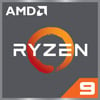
|
AMD Ryzen 9 7900X
12C 24T @ 5.60 GHz |
||

|
AMD Ryzen 9 7900X3D
12C 24T @ 5.60 GHz |
||

|
Apple M2 Pro (12-CPU 19-GPU)
12C 12T @ 3.50 GHz |
||
|
|
Apple M2 Max (30-GPU)
12C 12T @ 3.50 GHz |
||

|
AMD Ryzen 9 7950X3D
16C 32T @ 5.70 GHz |
||

|
Apple M2 Max (38-GPU)
12C 12T @ 3.50 GHz |
||
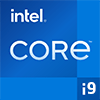
|
Intel Core i9-13900F
24C 32T @ 5.60 GHz |
||
Cinebench 2024 (Multi-Core)
The Multi-Core test of the Cinebench 2024 benchmark uses all cpu cores to render using the Redshift rendering engine, which is also used in Maxons Cinema 4D. The benchmark run is 10 minutes long to test whether the processor is limited by its heat generation.

|
AMD Ryzen 9 3900X
12C 24T @ 4.60 GHz |
||

|
Apple M3 Pro (12-CPU 18-GPU)
12C 12T @ 4.06 GHz |
||
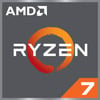
|
AMD Ryzen 7 7700
8C 16T @ 5.30 GHz |
||
|
|
Apple M2 Max (30-GPU)
12C 12T @ 3.50 GHz |
||

|
Apple M2 Max (38-GPU)
12C 12T @ 3.50 GHz |
||

|
Intel Core i7-12700F
12C 20T @ 4.90 GHz |
||

|
Intel Core i7-12700
12C 20T @ 4.90 GHz |
||
Cinebench R23 (Single-Core)
Cinebench R23 is the successor of Cinebench R20 and is also based on the Cinema 4 Suite. Cinema 4 is a worldwide used software to create 3D forms. The single-core test only uses one CPU core, the amount of cores or hyperthreading ability doesn't count.

|
Intel Core i5-1345U
10C 12T @ 4.70 GHz |
||

|
Intel Core i5-1340P
12C 16T @ 4.60 GHz |
||

|
Intel Core i5-1335U
10C 12T @ 4.60 GHz |
||
|
|
Apple M2 Max (30-GPU)
12C 12T @ 3.50 GHz |
||

|
Apple M2 Ultra (76-GPU)
24C 24T @ 3.50 GHz |
||

|
Apple M2 Ultra (60-GPU)
24C 24T @ 3.50 GHz |
||

|
Apple M2 Pro (10-CPU 16-GPU)
10C 10T @ 3.50 GHz |
||
Cinebench R23 (Multi-Core)
Cinebench R23 is the successor of Cinebench R20 and is also based on the Cinema 4 Suite. Cinema 4 is a worldwide used software to create 3D forms. The multi-core test involves all CPU cores and taks a big advantage of hyperthreading.

|
Intel Core i7-11700K
8C 16T @ 4.50 GHz |
||

|
Intel Core i7-11700KF
8C 16T @ 4.50 GHz |
||

|
Intel Core i9-7900X
10C 20T @ 4.00 GHz |
||
|
|
Apple M2 Max (30-GPU)
12C 12T @ 3.50 GHz |
||

|
Apple M2 Max (38-GPU)
12C 12T @ 3.50 GHz |
||

|
Apple M2 Pro (12-CPU 19-GPU)
12C 12T @ 3.50 GHz |
||

|
AMD Ryzen Z1 Extreme
8C 16T @ 3.30 GHz |
||
Geekbench 5, 64bit (Single-Core)
Geekbench 5 is a cross plattform benchmark that heavily uses the systems memory. A fast memory will push the result a lot. The single-core test only uses one CPU core, the amount of cores or hyperthreading ability doesn't count.

|
Intel Core i9-11900K
8C 16T @ 5.30 GHz |
||

|
Intel Core i9-11900KF
8C 16T @ 5.30 GHz |
||

|
Intel Core i5-14500
14C 20T @ 5.00 GHz |
||
|
|
Apple M2 Max (30-GPU)
12C 12T @ 3.50 GHz |
||

|
Apple M2 Pro (10-CPU 16-GPU)
10C 10T @ 3.50 GHz |
||

|
Apple M2 Max (38-GPU)
12C 12T @ 3.50 GHz |
||

|
Apple M2 Pro (12-CPU 19-GPU)
12C 12T @ 3.50 GHz |
||
Geekbench 5, 64bit (Multi-Core)
Geekbench 5 is a cross plattform benchmark that heavily uses the systems memory. A fast memory will push the result a lot. The multi-core test involves all CPU cores and taks a big advantage of hyperthreading.
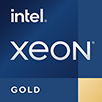
|
Intel Xeon Gold 5220R
24C 48T @ 2.40 GHz |
||
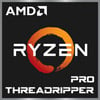
|
AMD Ryzen Threadripper PRO 3955WX
16C 32T @ 4.00 GHz |
||

|
Intel Xeon Gold 6238
22C 44T @ 2.60 GHz |
||
|
|
Apple M2 Max (30-GPU)
12C 12T @ 3.50 GHz |
||

|
Apple M2 Max (38-GPU)
12C 12T @ 3.50 GHz |
||

|
Apple M2 Pro (12-CPU 19-GPU)
12C 12T @ 3.50 GHz |
||

|
Intel Core i9-12900HX
16C 24T @ 2.30 GHz |
||
Geekbench 6 (Single-Core)
Geekbench 6 is a benchmark for modern computers, notebooks and smartphones. What is new is an optimized utilization of newer CPU architectures, e.g. based on the big.LITTLE concept and combining CPU cores of different sizes. The single-core benchmark only evaluates the performance of the fastest CPU core, the number of CPU cores in a processor is irrelevant here.

|
Intel Core i7-14650HX
16C 24T @ 5.20 GHz |
||

|
Intel Core i7-13850HX
20C 28T @ 5.30 GHz |
||

|
AMD Ryzen 9 7940HX
16C 32T @ 5.20 GHzNot verified |
||
|
|
Apple M2 Max (30-GPU)
12C 12T @ 3.50 GHz |
||

|
Apple M2 Ultra (76-GPU)
24C 24T @ 3.50 GHz |
||

|
Apple M2 Ultra (60-GPU)
24C 24T @ 3.50 GHz |
||

|
Apple M2 Pro (10-CPU 16-GPU)
10C 10T @ 3.50 GHz |
||
Geekbench 6 (Multi-Core)
Geekbench 6 is a benchmark for modern computers, notebooks and smartphones. What is new is an optimized utilization of newer CPU architectures, e.g. based on the big.LITTLE concept and combining CPU cores of different sizes. The multi-core benchmark evaluates the performance of all of the processor's CPU cores. Virtual thread improvements such as AMD SMT or Intel's Hyper-Threading have a positive impact on the benchmark result.

|
AMD Ryzen 7 8700G
8C 16T @ 4.70 GHz |
||

|
AMD Ryzen 7 PRO 8700G
8C 16T @ 4.70 GHz |
||

|
AMD Ryzen 7 7800X3D
8C 16T @ 4.60 GHz |
||
|
|
Apple M2 Max (30-GPU)
12C 12T @ 3.50 GHz |
||

|
Apple M2 Max (38-GPU)
12C 12T @ 3.50 GHz |
||

|
Apple M2 Pro (12-CPU 19-GPU)
12C 12T @ 3.50 GHz |
||

|
Intel Core i5-13500
14C 20T @ 4.20 GHz |
||
iGPU - FP32 Performance (Single-precision GFLOPS)
The theoretical computing performance of the internal graphics unit of the processor with simple accuracy (32 bit) in GFLOPS. GFLOPS indicates how many billion floating point operations the iGPU can perform per second.

|
Apple M3 Max (16-CPU 40-GPU)
Apple M3 Max (40 Core) @ 1.40 GHz |
||

|
Apple M2 Max (38-GPU)
Apple M2 Max (38 Core) @ 1.40 GHz |
||

|
Microsoft XBox Series X
AMD Custom Radeon Graphics (XBox Series X) @ 1.83 GHz |
||
|
|
Apple M2 Max (30-GPU)
Apple M2 Max (30 Core) @ 1.40 GHz |
||

|
Apple M3 Max (14-CPU 30-GPU)
Apple M3 Max (30 Core) @ 1.40 GHz |
||

|
Apple M1 Max (32-GPU)
Apple M1 Max (32 Core) @ 1.30 GHz |
||

|
Sony Playstation 5
AMD Custom Radeon Graphics (Playstation 5) @ 2.23 GHz |
||
Estimated results for PassMark CPU Mark
Some of the CPUs listed below have been benchmarked by CPU-monkey. However the majority of CPUs have not been tested and the results have been estimated by a CPU-monkey’s secret proprietary formula. As such they do not accurately reflect the actual Passmark CPU mark values and are not endorsed by PassMark Software Pty Ltd.

|
Intel Core i9-10920X
12C 24T @ 4.40 GHz |
||

|
Intel Core i9-7940X
14C 28T @ 3.70 GHz |
||

|
Intel Xeon Gold 6242
16C 32T @ 3.40 GHz |
||
|
|
Apple M2 Max (30-GPU)
12C 12T @ 3.50 GHz |
||

|
Apple M2 Max (38-GPU)
12C 12T @ 3.50 GHz |
||

|
Apple M2 Pro (12-CPU 19-GPU)
12C 12T @ 3.50 GHz |
||
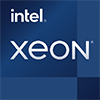
|
Intel Xeon W-3235
12C 24T @ 4.00 GHz |
||
CPU performance per watt (efficiency)
Efficiency of the processor under full load in the Cinebench R23 (multi-core) benchmark. The benchmark result is divided by the average energy required (CPU package power in watts). The higher the value, the more efficient the CPU is under full load.

|
Apple M3 Max (16-CPU 40-GPU)
24,028 CB R23 MC @ 57 W |
||

|
Apple M2 Pro (10-CPU 16-GPU)
12,125 CB R23 MC @ 30 W |
||

|
AMD Ryzen 7 7735HS
13,766 CB R23 MC @ 35 W |
||
|
|
Apple M2 Max (30-GPU)
14,855 CB R23 MC @ 40 W |
||

|
Apple M2 Pro (12-CPU 19-GPU)
14,855 CB R23 MC @ 40 W |
||

|
Apple M2 Max (38-GPU)
14,855 CB R23 MC @ 40 W |
||

|
Apple M2 Ultra (60-GPU)
28,570 CB R23 MC @ 80 W |
||
Performance for Artificial Intelligence (AI) and Machine Learning (ML)
Processors with the support of artificial intelligence (AI) and machine learning (ML) can process many calculations, especially audio, image and video processing, much faster than classic processors. The performance is given in the number (trillions) of arithmetic operations per second (TOPS).

|
Apple A15 Bionic (4-GPU)
6C 6T @ 3.23 GHz |
||

|
Apple A15 Bionic (5-GPU)
6C 6T @ 3.23 GHz |
||

|
Apple M2
8C 8T @ 0.66 GHz |
||
|
|
Apple M2 Max (30-GPU)
12C 12T @ 0.66 GHz |
||

|
Qualcomm Snapdragon 870
8C 8T @ 3.20 GHz |
||
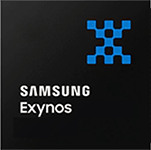
|
Samsung Exynos 990
8C 8T @ 2.73 GHz |
||

|
Qualcomm Snapdragon 865+
8C 8T @ 3.10 GHz |
||
Benchmarks

Cinebench 2024 (SC)
272 entries
272 entries

Cinebench 2024 (MC)
271 entries
271 entries

Cinebench R23 (SC)
586 entries
586 entries

Cinebench R23 (MC)
565 entries
565 entries

Geekbench 5 (SC)
2,488 entries
2,488 entries

Geekbench 5 (MC)
2,461 entries
2,461 entries

Geekbench 6 (SC)
1,755 entries
1,755 entries

Geekbench 6 (MC)
1,703 entries
1,703 entries

FP32 SP (iGPU)
2,042 entries
2,042 entries
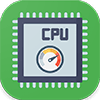
PassMark CPU-Mark
2,392 entries
2,392 entries

CPU performance per watt (efficiency)
109 entries
109 entries

AI / ML Performance
119 entries
119 entries
Description of the processor
The Apple M2 Max (30 GPU) was released in the first quarter of 2023 and is based on the second generation of the Apple-developed M series. The processor is manufactured with a structure width of 5 nanometers and is based on a chiplet chip design. It has a 36.00 megabyte level 3 cache and supports the 64-bit ISA instruction set ARMv8-A64.Along with the processor, a new Apple Mac Studio, a 14-inch and a 16-inch MacBook Pro were presented. Alternatively, all 3 devices can also be purchased with the Apple M2 Max (38 GPU).
The Apple M2 Max (30 GPU) has a total of 12 processor cores made up of 8 performance cores codenamed Avalanche and 4 efficiency cores codenamed Blizzard. The 8 performance cores clock at up to 3.50 gigahertz and the 4 efficiency cores at up to 2.80 gigahertz. Hyperthreading is not supported by the Apple CPU and Apple does not intend to overclock the processor.
Furthermore, the Apple Neural Engine, which is equipped with 16 cores, is integrated in the Apple M2 Max (30 GPU). The Apple Neural Engine is responsible for the hardware support of AI content.
The internal graphics unit in the Apple M2 Max (30 GPU) is equipped with 30 graphics cores and clocks at up to 1.40 gigahertz. 480 execution units with a total of 3840 shader units are used, with which the graphics unit achieves an FP32 computing power of a very strong 10.65 TerraFLOPS. This puts it slightly above an NVIDIA GeForce RTX 3050 and roughly on par with an AMD Radeon RX 6600.
The Apple M2 Max (30 GPU) is only manufactured with a permanently installed working memory. The processor can be purchased with up to 96 gigabytes of LPDDR5-6400 RAM. With its 4 memory channels, the working memory in the Apple M2 Max (30 GPU) achieves a maximum memory bandwidth of 409.6 GB/s.
Popular comparisons
back to index




